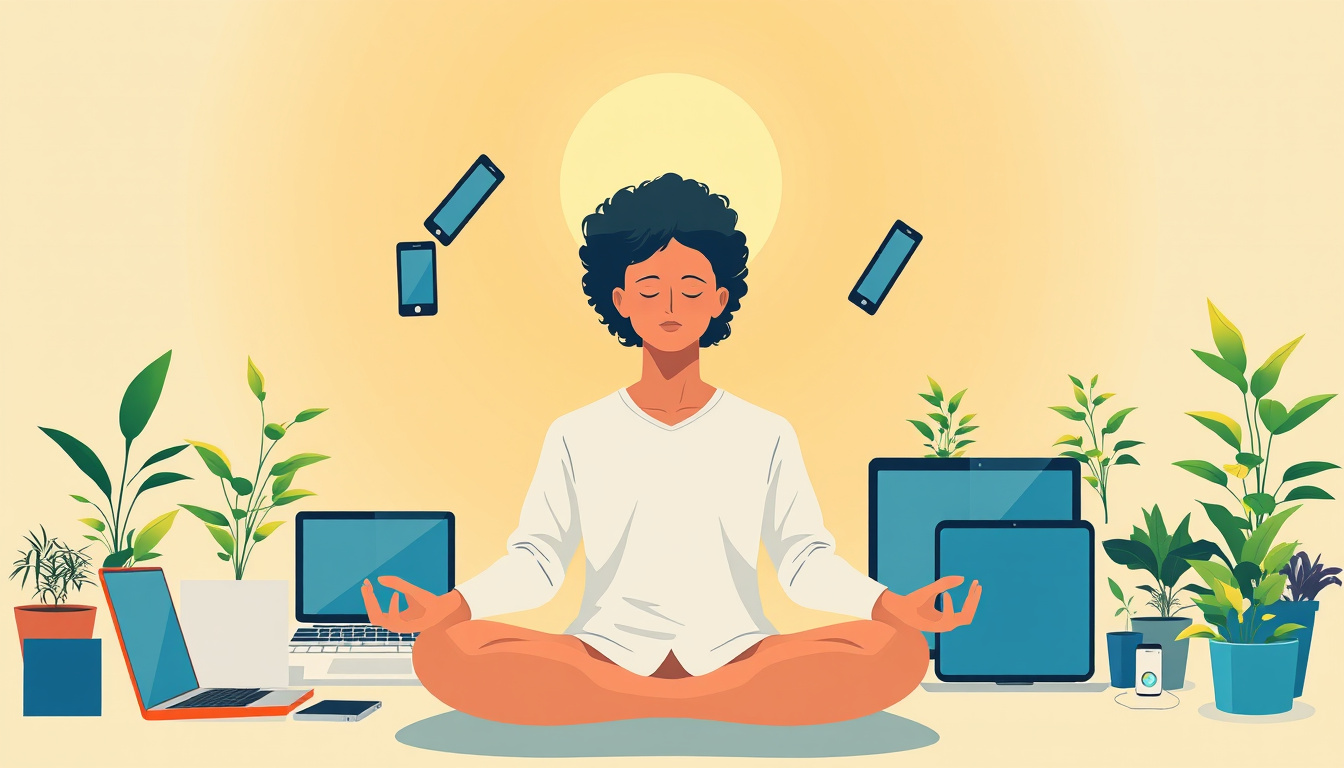Digital Detox: Reclaiming Your Real-Life Connections
In today’s fast-paced digital world, many of us find ourselves distracted by the endless notifications, social media updates, and screen time that can consume our lives. As we immerse ourselves in our devices, we may not realize how our real-life connections are suffering. This is where the concept of a digital detox comes into play.
In this comprehensive article, we will explore what Digital Detox: Reclaiming Your Real-Life Connections truly means, its importance in maintaining healthy relationships, and how to embark on a journey to reconnect with ourselves and others. From understanding the effects of excessive screen time to implementing practical steps for a successful detox, we will guide you in creating a balanced approach to technology use that prioritizes meaningful interactions over digital distractions.

Key Takeaways
- Digital detox involves intentionally reducing screen time to foster real-life connections.
- Excessive screen time can negatively affect relationships and communication skills.
- Practical steps for a digital detox include setting specific time limits and engaging in tech-free activities.
- Reconnecting with loved ones can strengthen bonds and improve emotional well-being.
- Creating a balanced approach to technology use ensures healthier interactions both online and offline.
Understanding Digital Detox: What It Is and Why It Matters
Digital Detox: Reclaiming Your Real-Life Connections is an essential concept in today’s technology-driven world. As we become increasingly reliant on smartphones, social media, and various digital platforms, the lines between our online and offline lives blur, often leading to feelings of isolation and stress. A digital detox involves intentionally stepping away from digital devices, allowing individuals to reconnect with themselves and their surroundings without the constant distractions that technology brings. This break from screens can enhance mental clarity, improve relationships, and boost overall well-being. By understanding the significance of a digital detox, we can cultivate a healthier balance between our digital engagement and real-life interactions, fostering deeper connections with family, friends, and ourselves. As you embark on your digital detox journey, consider how reclaiming your real-life connections can lead to a more fulfilling and enriched lifestyle.
The Impact of Excessive Screen Time on Relationships
In today’s fast-paced digital age, excessive screen time can significantly strain our relationships, creating a disconnect with those we care about most. The constant distraction of smartphones and social media can lead to a decline in face-to-face interactions, as individuals find themselves scrolling through feeds rather than engaging in meaningful conversations. To combat this, many are turning to a digital detox: reclaiming your real-life connections by consciously reducing screen usage. This practice encourages individuals to unplug from their devices and reconnect with family and friends in person, fostering deeper emotional bonds and enhancing communication. Embracing a digital detox not only improves personal relationships but also promotes better mental health, allowing us to be more present and engaged in the moment, thereby enriching our social lives.
‘Technology is a useful servant but a dangerous master.’ – Christian Lous Lange

Practical Steps for a Successful Digital Detox
In today’s hyper-connected world, a Digital Detox is essential for reclaiming your real-life connections. Begin by setting specific timeframes for your digital usage; for instance, allocate certain hours of the day as screen-free time. During these hours, engage in offline activities that foster genuine interactions, such as reading, hiking, or spending quality time with friends and family. Consider using apps that monitor your screen time to help you stay accountable and reduce habitual checking of devices. Additionally, designate tech-free zones in your home, like the dining table or bedroom, to create a physical boundary that encourages more face-to-face conversations. Finally, remember to replace technology with hobbies that encourage creativity and mindfulness, such as painting or cooking. By implementing these practical steps, you’ll not only enjoy a refreshing break from screens but also revitalize the meaningful connections in your life, making your Digital Detox a rewarding experience.
Reconnecting with Loved Ones: Building Stronger Bonds
In today’s fast-paced, technology-dominated world, it’s easy to lose sight of the genuine connections that nurture our relationships. A digital detox: reclaiming your real-life connections is an essential step toward building stronger bonds with loved ones. By stepping away from screens, even for a short while, you allow yourself the opportunity to engage fully with those around you. This intentional break from technology fosters deeper conversations, more meaningful interactions, and the rediscovery of shared experiences that are often overshadowed by the distractions of social media and constant notifications. Whether it’s through a family game night, a dinner without phones, or a simple walk in nature, implementing a digital detox can help revitalize your relationships and enhance emotional connectivity, leading to a more fulfilling social life.

Creating a Balanced Approach to Technology Use
In our hyper-connected world, the practice of a digital detox has emerged as a vital tool for restoring balance in our lives. This approach encourages individuals to take intentional breaks from screens and social media, allowing them to reconnect with their real-life relationships and experiences. By embracing a digital detox, one can reduce feelings of anxiety and improve mental clarity, ultimately leading to a healthier lifestyle. Strategies such as setting designated screen-free times, engaging in outdoor activities, and cultivating hobbies can help individuals reclaim their time and focus on meaningful connections with family and friends. A balanced approach to technology use not only promotes well-being but also enhances the quality of our interactions, creating a richer and more fulfilling life.
Frequently Asked Questions
What is a digital detox?
A digital detox is a intentional break from using screen-based devices such as smartphones, computers, and social media. It aims to reduce stress, improve mental health, and enhance real-life connections by allowing individuals to reconnect with their surroundings and relationships.
Why is a digital detox important?
Digital detox is important because excessive screen time can negatively impact our relationships, mental well-being, and overall life satisfaction. By taking a break from technology, individuals can improve their focus, enhance their interpersonal connections, and rediscover the joy of face-to-face interactions.
How can I implement a successful digital detox?
To implement a successful digital detox, start by setting clear boundaries around technology use, scheduling designated detox times, and finding alternative activities to engage in, such as reading, exercising, or spending time with loved ones. Gradually ease into the detox to ensure a sustainable and fulfilling experience.
What are some activities I can do during my digital detox?
During your digital detox, consider engaging in activities like going for a walk in nature, practicing mindfulness or meditation, cooking a new recipe, reading a book, or having meaningful conversations with friends and family. These activities can help strengthen your connections while keeping you away from screens.
How can I maintain a balanced approach to technology after a digital detox?
To maintain a balanced approach to technology after a digital detox, set specific limits on screen time, prioritize real-life interactions, and regularly assess your technology use. Consider creating technology-free zones or times in your daily routine to encourage more meaningful connections.
